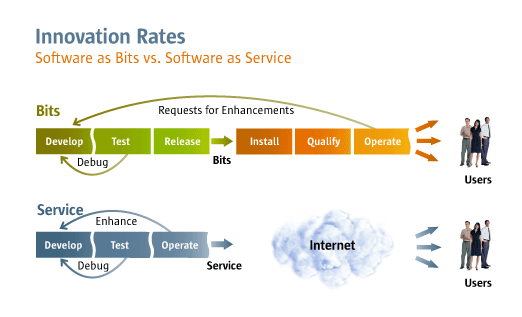Ben Yoskovitz shares his experience with SaaS (Software as a Service), in which he suggests that vendors should charge their customers monthly, or offer discounts for longer term commitments. In my opinion, a more efficient option will be to offer a PAYG (pay as you go) model (with discount incentives), where-by customers should only pay for what they have consumed. Amazon’s Simple Storage Service (Amazon S3) is a good example of this PAYG model.
SaaS is not an entirely new model to software application delivery. It earlier existed in the form of the Application Service Provider (ASP) model. But what’s different about SaaS is that its a platform to serve a proprietary application(s), not only providing a frontend access to the customers, but also providing a rich API for open integration.

SaaS doesn’t limit the customers to just being able to “rent” and run the application, but it also enables them to intergate the application with their business processes through web services. This multi-tenant model is also different in architectural terms, because the SaaS vendor implements a virtual environment with a central (shared) application server but separate (often isolated) databases for each tenant.
However, cluster reliability and performance are still crticial concerns for most SaaS vendors. Moreover, I think that SaaS is not for everyone. The infrastructure required for a robust SaaS platform is not an easy or inexpensive task.
Update (26th March): Martin LaMonica has written about the Cloud computing trend, that encapsulates SaaS.